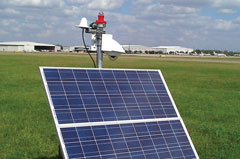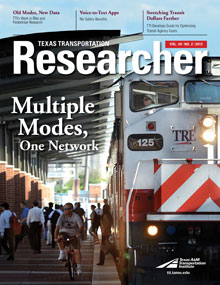Many folks throughout Texas may see a plane buzzing overhead and never give it a second thought. Or they may be aware that an airport exists on the outskirts of their town, but don’t realize its importance. Yet the number of arriving planes and the capabilities of airports are crucial economic drivers to many Texas communities.

Photo credit: Patriot Technologies, LLC.
General aviation (GA) in Texas provided more than 56,000 jobs and $14.6 billion in total economic output in 2011. Many GA airports in Texas seek grant assistance from the Texas Department of Transportation’s (TxDOT’s) Aviation Division to update their facilities and attract business. With a limited amount of funds, though, TxDOT must prioritize airports based on their needs.
To help with this need, the Texas A&M Transportation Institute (TTI) is working with Patriot Technologies, LLC, and TxDOT to install automated runway sensors that count the number of aircraft arriving at a particular airport. Many GA airports do not have an air traffic control tower or dedicated staff to keep track of the number of planes arriving or departing.
“The sensor is placed in an optimal location to capture data based on an airport’s runway configuration,” says TTI Research Scientist Jeff Borowiec. “Some of the information collected includes photos of the aircraft, the type and size of the aircraft, and the time of takeoff or landing. The airports can then download these data.”
Currently, sensors are installed at airports in Sugarland and Denton, Texas, with plans to move the equipment to Arlington for additional testing.
The air traffic control towers at these two airports allow researchers to correlate the data from the sensors to ensure researchers are getting accurate information before installing the sensors in smaller GA airports that lack personnel to track planes.
“Knowing the type and frequency of aircraft arriving assists us in identifying an airport’s current and future needs, such as pavement strengths, runway lengths, widths and other important design elements,” says TxDOT Aviation Division Director of Planning and Programming Greg Miller. “It provides us with very good reference data that will allow us to make more informed decisions at the general aviation airports throughout Texas.”

